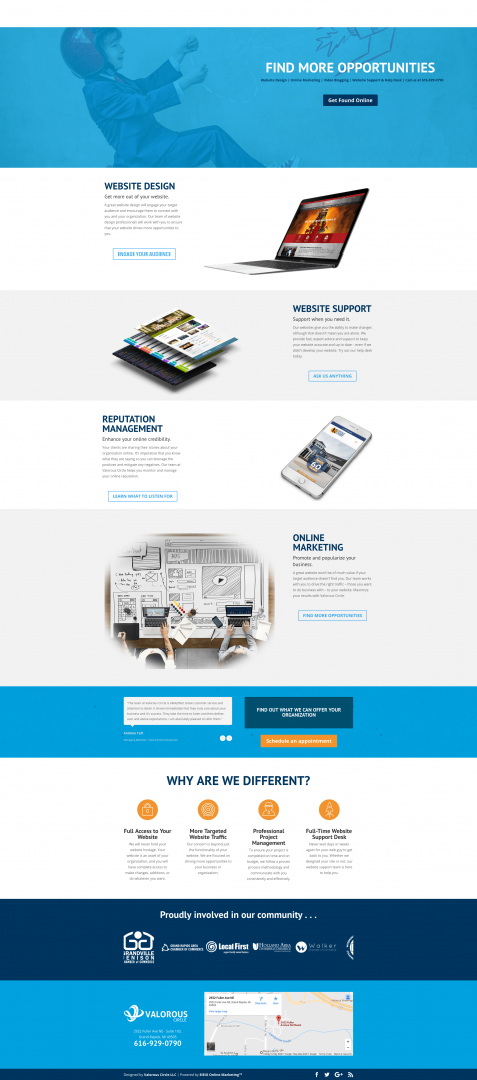3 Ways To Improve Your Content Architecture
Congratulations! You just came up with your best idea yet and wrote exactly the words you wanted, but due to a lack of content architecture, nothing happens to your page’s online activity.
Search engine optimization issues plague content like this every day for some of the simplest reasons. Chief among them is a lack of supporting content despite the best efforts to form concise copy with clear objectives. SEO tools don’t require a 300-word threshold but it certainly helps if there’s ample content on your page driving distinct actions or ideas with strong keywords.
Here are three ways you can strengthen your content architecture without losing track of the main focus.
1. Add Similar Content & Space
It may seem counterintuitive, but adding more fleshed-out ideas similar to a finished project’s page can enhance the overall search engine value. First off, you’re adding words. More importantly, you’re adding relevant keywords.
For instance, if you have three good pieces of information on similar products on three different pages, try adding all of them together and retool your SEO keyword. You already know each of these extra sources of information is strong enough to stand on their own, textually, but you still need people to see them.
Once you add enough content, both written and visual, space them out. Just adding two, three or four ideas together in a cascade of copy, however, looks lazy. Create space around your ideas. Add layers, multiple calls to action and change photo positioning.
Check out Valorous Circle’s front page to the right.
It simultaneously presents an information bar, five layers of different services and their respective calls to action, reviews, differences between us and competitors and our community contact information.
Each of these sections wouldn’t register with search engines if left on their own, but together under the ‘website design’ keyword umbrella, our front page is easily trackable despite offering numerous varied ideas and actions.
2. Arguments & Transformations
What happens when you don’t have similar content to share? Add the exact opposite!
Adding older subject matter can enhance new content architecture. If you can string along copy between two opposing ‘arguments,’ then you create a dialogue between today and yesterday.
Let’s say a financial advisor writes a blog about the ease of seeking applicable credits ahead of tax season. Everything in the blog post makes sense to the advisor. It’s clear, concise, but filled with technical jargon.
The audience might connect if they’re “in the know,” but novices seeking help in such matters will get lost in the complex material.
Now let’s say that same advisor wrote a post the previous year on another tax-based subject, but for mass consumption during early April. The post was longer, but with simpler terms and visuals.
In an effort to boost his new content and increase overall readership, the advisor can pair the new post and parts of the old post. Using layman’s terms to enhance their new content’s word count, the advisor also revitalizes old content with the new language.

Jargon is useful only when people know how to connect the dots from word to word. Presenting older content first and transitioning to the new ideas highlights your ability to connect with a broader audience.
People love seeing changes over time – the journey from beginning to end. When we see transformations we see the importance of something delivering on its promise, which is deeply satisfying no matter what product someone is selling.
3. Filler Content
The last big way to improve content architecture to your pages is by adding lots of little details.
It’s always vital to reread your content. Once you do, ask yourself these questions.
Do you have an introduction? Introductions don’t have to be long-winded prologs. They can be in the forms of headlines. subheads or a simple two-sentence paragraph stating the purpose of the page.
Does your content use transition words? Transition words – afterward, consequently, from here on, furthermore, however, meanwhile, otherwise, similarly, therefore, etc. – lead the reader from one thought to the next.
Does your page have images? If not, then add some right away. If you already have images, add captions and alt text to your photos. Captions will boost your word count, while alt text improves your SEO if it contains your select keywords.
Do you have any calls to action? A call to action is typically at the end of your page. They allow the reader time to reflect and puts the onus on him or her to decide if they want to seek further information.
If you need ANY additional help crafting a blog, creating a landing page or curating a website, please fill out one of the forms or schedule an appointment below.



